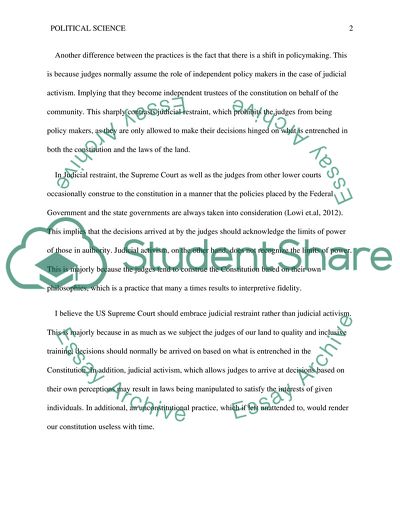Difference between Judicial activism and Judicial restraint Essay. Retrieved from https://studentshare.org/law/1653804-difference-between-judicial-activism-and-judicial-restraint
Difference Between Judicial Activism and Judicial Restraint Essay. https://studentshare.org/law/1653804-difference-between-judicial-activism-and-judicial-restraint.


